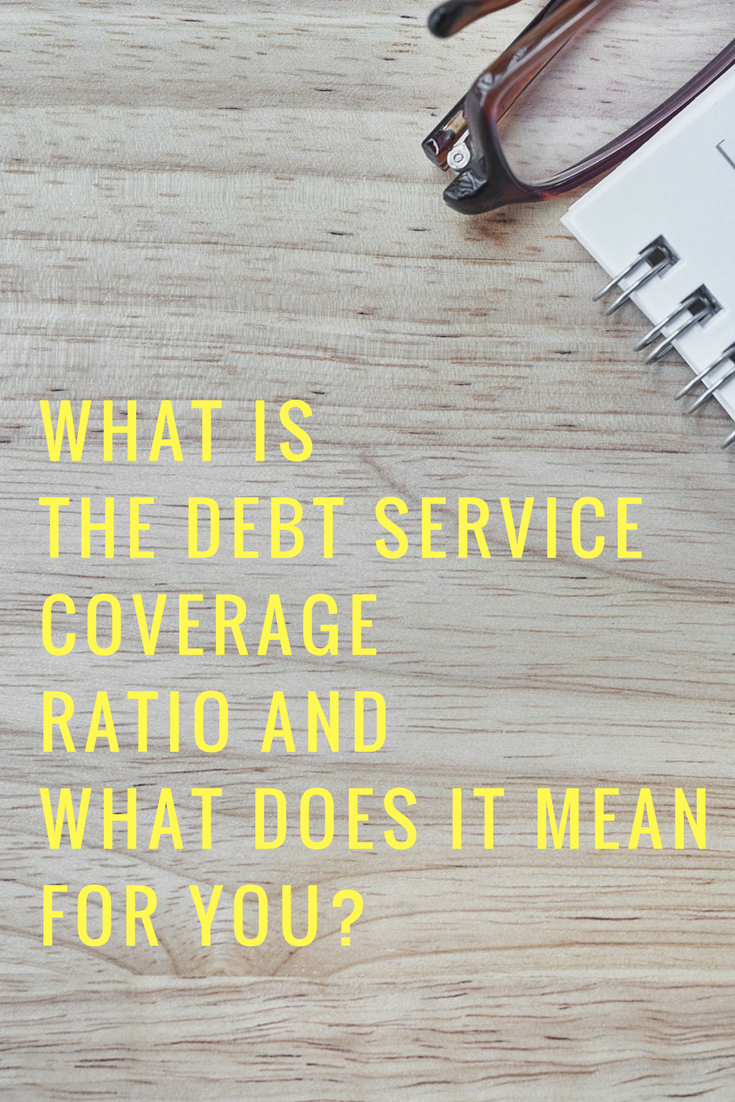Maybe you’ve heard the term “debt service coverage ratio”, but do you know what it means? If not, you really should because there’s a chance it’s affecting your finances.
Basically, it is your cash flow available to pay your current debt obligations. The ratio is your cash flow availability compared to your debt obligations that are due within one year including any interest, principal, and lease payments.

In most cases, the term “debt service coverage ratio” applies to businesses and their ability to pay their lenders and cover their expenses. But it can be applied to individuals as well because it can have an impact on many areas of your finances. The higher your ratio (meaning high cash flow and low debt), the easier it will be for you to obtain a loan. And if your ratio is high, you can obtain that loan at a lower interest rate. A high ratio can also have a positive impact on your credit score. An acceptable ratio may even be a term for acquiring a loan, both for personal reasons and for business purposes. And if it is, your loan can be in default if your ratio lowers beyond the required limit. Which means your loan could be called in full.
Banks use your debt service coverage ratio to determine your qualifications for a loan so if you’re in the market for a personal loan, auto loan, or home loan, you’ll want to know your ratio. And if you’re trying to obtain a loan for business purposes, it’s almost guaranteed that your ratio will play into the outcome of your loan application.
Here’s how your ratio is calculated:
Debt Service Coverage Ratio = Net Operating Income (or cash flow)/Debt Service
Breaking it down, it looks like this:
Your Net Operating Income = Net Income + Amortization and Depreciation + Interest Expense + Non-Cash Items
Debt Service = Principal Repayment + Interest Payments + Lease Payments
To calculate your ratio, you need to know your entire cash flow. This should include your salary, commissions, investment income, rental property income, and any other income you may receive. Add all of this up for a one year period then deduct your expenses. Be sure to include every expense that you will need to justify like loans, rent/mortgage, utilities, and any other expenses.
If you’re looking for your ratio in regards to your business, you will need to look at your total income and deduct all operating expenses to acquire your ratio.
To be in good standing, your ratio should be above 1. To put that in perspective, a ratio of .8 means you only have enough cash flow to cover 80% of your debt. For the purposes of a new loan application, that’s not suitable to a lender. The higher your ratio, anything over 1, puts you in good standing for a new loan. Anything above 1 means you are able to cover 100% of your debt with something left over. Ideally, lenders will look for a ratio of 1.2 or higher in order to have confidence that you can cover your loan.
Knowing your debt service coverage ratio in advance of applying for new credit can put you in better standing for acquiring a lower interest rate and better loan terms.

Emilie is a prolific blogger, and influencer inspiring millennial women to live financially, physically, and professionally fit lives. She writes about overcoming debt, while balancing trying to eat healthy, stay fit, and have a little fun along the way. She is a politics major turned data engineer who graduated from Princeton University in 2015. She currently lives in North Carolina with her college sweetheart Casey who is currently stationed at Fort Bragg. She enjoys eating food, cuddling with her dog, and binge watching HGTV.
Leave a Reply